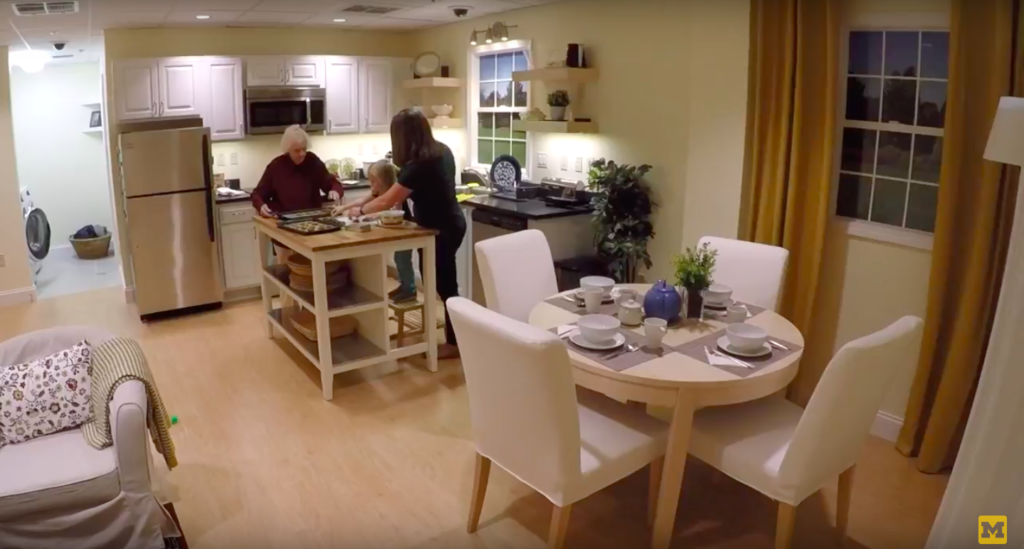A new lab setting from the University of Michigan could help researchers better study how older adults interact with their surroundings inside their homes.
The setting, called HomeLab, is a mock apartment outfitted with all the trappings and conveniences of a modern dwelling, such as a stove, microwave, refrigerator and washer and dryer. But HomeLab has something that normal residences don’t: a hidden observation room, two-way mirrors, high-powered cameras, microphones and equipment for a wide array of sensors.
HomeLab offers researchers an opportunity to observe seniors as they perform activities of daily living (ADLs). That could have benefits for researchers who are trying to study a disease that affects ADLs, such as Alzheimer’s.
For example, a scientist might ask a senior to wash the dishes, take something out of the refrigerator or add something to a saucepan on the stove. During the task, the researchers can observe and record data from cameras, microphones and wearable sensors that track muscle activity, eye movement, heart rate, blood pressure and respiration rate. Researchers can also collect, analyze and store blood and saliva.
HomeLab also has many applications in the study of fields related to home health care, says Jeannette Jackson, the BioSocial Methods Collaborative’s managing director.
“Part of the reason this lab was constructed is because the [University of Michigan] health care system is very interested in studying how to help patients discharge safely from the hospital and reducing readmission rates,” Jackson tells HHCN. “Part of this equation is the extent to which sensors are able to collect data that can be used in managing health care at home.”
HomeLab lies “somewhere between a traditional laboratory and a real home,” says Alicia Carmichael, research process manager for the university’s BioSocial Methods Collaborative.
“Researchers have full control to manipulate the environment in the HomeLab, which is not practical in a normal home,” Carmichael tells Home Health Care News. “This flexibility allows researchers to test devices and interventions for seniors in a safe space before deploying them in ‘the field’ of seniors’ own homes.”
HomeLab was created with input from the University of Michigan’s College of Urban Planning and Architecture, School of Art and Design, College of Engineering, School of Nursing and Medical School. The university’s Office of the Provost, Institute for Social Research and Critical Health Research Unit provided funding for the project.
So far, HomeLab has hosted only one research initiative—a pilot study from Procter & Gamble—but the possible future applications are numerous.
The university is not the first to construct a homelike laboratory setting for research. The University of Texas at Arlington (UTA) and Christian Care Communities, a not-for-profit senior living provider, once turned a vacant apartment into a test lab for futuristic gadgetry, for instance.
Other efforts, like the University of Waterloo’s Act@Home, are aimed at creating technology to make ADLs easier for seniors living with impairments.
The laboratory setting officially debuts on Sept. 26.
Written by Tim Regan




